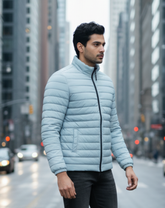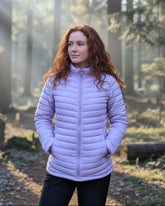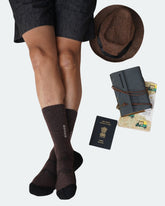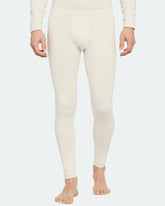Scaling Kedarkantha – Saini, Ishani, Tahseen

"We reached the Kedarkantha summit just in time for the sunrise. The sky was all shades of pink and orange. A golden halo shone behind the mountain ranges as we climbed up the ridge for the final ascent. The terrain is so steep that we were walking at the pace of 1km/hour. The magical views at 12,500 feet, from the top of Kedarkantha, the healing rays of the rising sun, refueled us with energy like a shot of Glucon-D!" says Saini Krishnamurthy, who climbed the mountain in December 2017. She along with 5 friends celebrated their Christmas holidays with a winter trek.

Kedarkantha peak ahead with the sun rising, 3 dhabas enroute the summit, last stop before final climb - Saini
Isn’t the access restricted in winter with roads getting closed due to the snowfall, I wonder. Tahseen Amber, an outdoor instructor, tells me that normally Himalayan expeditions don’t take place in winter, however Uttarakhand has few treks for the adventure enthusiast. Rupin Pass, Kedarkantha, Brahmatal, Chandrasheela, a trek to Tungnath temple are some of them.
Getting There
Dehradun is the closest city to start the trek. You can choose to reach Dehradun by road, flight or train. Saini and her group took the Nanda Devi Express train from Delhi. A 6 hour journey, with prayers for the train to reach in time, ensured they made it in time for that 1 bus that goes directly to Sankri, the base village for the trek. Shared taxis and private taxis are also available. You will cross Mussoorie, Uttarkashi, Purola, Mori and Kudgaon. Mobile networks are generally available till here.
Saini says, "The roads in Uttarakhand are more savage than the roads in Himachal Pradesh! Enroute the 12 hour bumpy ride, everyone was happy when the bus stopped for a break. The views take your breath away. Unable to hold our phones steady, we were still eager to capture a part of the beauty around us."
Located at 6400 feet, Sankri marks the end of the road head. The beauty of the forests and nature lays beyond. Saini and her friends stayed in a local homestay for the night. The hospitality and warmth of the mountain folks is legendary. Although they stay in villages, their lifestyles are way ahead of folks dwelling in the cities. Self sufficiency is at the very core of their way of life. They grow food in their fields, rear cows and sheep, make their own shawls and more. The man of the house reminisced memories of constructing the wooden house with his own hands. Plastered with a mixture of cow dung and mud, these homes are temperature regulating. There is a science behind building their homes over 2 levels. The ground floor is used for housing their cows, stacks of hay and firewood. The heat generated passes on to the top floor where they have the family stays. Saini remembers the dinner served with fresh ghee made on the same day.
Ishani and her group stopped at Mori, 2 hours before Sankri. It is a base to practice rock climbing and prepare for the trek. Kedarkantha Snow Expedition offers options to add 4 days of biking on a mountain road to reach the base camp.
"The trail from Sankri starts with forests of Pine, Oak and Bamboo trees. The Pine trees are covered with snow. We tapped the trees with our trekking poles and there were showers of snow like we see in the movies. The beauty of a slow motion shot seen in person" shares Tahseen. One of the best parts about the Kedarkantha trek is the massive clearings, also called as bugyal or small meadows. During winter, these get covered in snow, painting a canvas of picturesque snowscapes.

The Adventure Begins
Day 1 of the trek is an easy 5km walk that brings you to Juda ka Talab, located at 9100 feet. The lake is frozen in winters and it resembles an ice rink, inviting you to skate. It is advised though to not go too close as the lakes are considered holy by the locals. If you want to experience skating on a frozen river, look up the Chadar trek in Ladakh. The river gets frozen in winters, locals use this as a secret roadway to travel from one village to the other. I was lucky to glide, walk, run, dance and fall a number of times enroute the Chadar trek!
While you cannot go close to the lake at Juda ka talab, you can get closer to the stars. Saini shares some pro-tips. She suggests you step out of your tent before moonrise to watch the sky in all its glory. If Astronomy is one of your hobbies, then schedule the trek on a new moon night. You are sure to be enthralled by the show put up by the night skies.
Ishani trekked to Kedarkantha in 2019. Even in March, they encountered a lot of snow a kilometer from Juda ka Talab. Therefore Ishani strongly advises to wear a good pair of waterproof breathable shoes. In winter, the walk gets very challenging if you don’t have the right shoes and you risk your feet getting wet even before reaching base camp. Tahseen further adds the importance of boots with ankle support. Saini says, "You will experience your feet sink in 1 feet deep snow. It is bound to happen at least once. Therefore, wear gaiters. They block the snow from entering your pants and shoes, thus keeping your feet dry and protected."
The trinity to keep your feet warm on a trek and avoid frostbite: Warm socks + breathable waterproof shoes with ankle support + gaiters
The 2nd day of the trek takes you from Juda ka Talab to Kedarkantha base camp, at 11,250 feet. The slope gets steep and walking in snow adds to the challenge of the hike. The sun causes the snow to melt, making the trail slushy. If you are unsure of your footing and want to avoid slipping, Saini recommends walking parallel to the main trail, on untouched snow.
Saini and her group trekked all the way from Sankri to Base camp on Day 1 and she strongly advised against it. A pro-tip from her is to carry an Oximeter and drink sufficient water (atleast 2-3 litres a day). She took the lead in ensuring all her group members drink 1 liter of water as soon as they camped for the day. Faced with resistance at first, they felt better after this group ritual. She rightly shares that often, we don’t realise symptoms of altitude sickness, until it gets much worse. To avoid this and have a memorable trek, regularly check oxygen levels, ensuring they take steps to raise the level if it is hovering around 80 for someone and drinking water kept them in good stead.
The day was wrapped up early, to wake up at 2a.m. for the climb to the summit. Saini emphasizes the importance of a headlamp to show you the way when it is pitch dark. She prefers a headlamp to a torch, as you are hands free.
On Day 3, they start climbing early to reach in time for the sunrise. Kedarkantha peak is in the centre, offering panoramic views of the sun rising from the east, casting a golden halo behind the other mountain ranges. "Watching the sun rise from the summit is one of the most beautiful experiences of my life. We could see the Gangotri and Yamunotri ranges, Bandar Poonch peak, Black peak, Swargarohini peak to name a few. The last 1000 steps to the peak, walking along the ridge was moderately tough. The view from the top is a memory framed in my mind for life" says Tahseen.
"After the summit, there was a natural snow slide on the way down. We simply came to base camp glissading and giggling all the way," says Ishani. Saini chips in, "ensure the snow is deep and there are no rocks, else you can get hurt while glissading."
Tahseen led her group to climb down the other side of the mountain. They walked to Hargaon, a small village at 8,900 feet; located in the midst of forests and meadows. They followed a beautiful ritual. All the group members were asked to close their eyes, meditate and absorb the awesomeness of the experience they just had. Thank the divine for the grace and the opportunity to be close to nature.
While Ishani and Tahseen led a group to Kedarkantha, Saini did the trek on her own. She says, "this experience taught me that although we are equals as friends, although there is no leader in the group, I have to be assertive when required. They taught me to do the right thing.I took the responsibility for the collective wellbeing of the group. I ensured everyone was well hydrated and it helped us immensely."
Leading the trek 3 times, Tahseen saw the transformation in the people over the 4 days. With no mobile networks, friends begin to have real conversations with one another, new friends are made, relationships that don’t show off what you own, all of that fades into oblivion. All that matters is the happiness in our souls. It is for moments like these that we climb mountains. It is for moments like these that we live. It is in moments like these that we want to be one with nature.
On day 4, they walked back to Sankri, bidding everyone goodbye to head back to the cities or other explorations. Tahseen says, "before you leave for the city, take back any waste, chocolate wrappers, wet tissues, sanitary napkins, take it back to Dehradun. Don’t leave it on the mountains."
Adding it to my bucket list
With memories of spending an hour with the cutest mountain puppies, crossing a bridge made of snow, facing the challenge of walking in snow and watching that magical sunrise at the summit, Kedarkantha is a trek I want to do. What about you?
Quick Facts
•Location: Kedarkantha is part of the Singtur range, located in Govind Pashu Vihar National Park and Sanctuary, Garhwal Himalayas
•State: Uttarakhand
•Region of Himalayas: Uttarkashi District, Garwhal Himalayas
•How to get there:
Dehradun is the closest city to start the trek. You can choose to reach Dehradun by road, flight or train. The Nanda Devi Express train takes 6 hours to reach Dehradun from Delhi. If you choose public transport, there is 1 bus that leaves Dehradun at 6:30a.m. that goes directly to Sankri, the base village for the trek. There are other buses that ply from Dehradun to Sankri, but you may not make it on the same day. They take longer than the direct bus, that ensures you reach in 12 hours. Shared taxis and private taxis are also available. You will cross Mussoorie, Uttarkashi, Purola, Mori and Kudgaon. Mobile networks are generally available till here.

Frequently Asked Questions Answered
Q. Is the Kedarkantha trek easy? What are the challenges to account for enroute this trek?
A. Ishani says the most challenging part of the trek is the steep ridge walk to the summit. It can be taxing for beginners. Practicing climbing stairs or jogging on slopes in the city coupled with regular breathing exercises will help make the trek experience enjoyable.
Q. What is fitness preparation I must do before I go for the Kedarkantha trek?
A. Walk for atleast 5km everyday 3 months before the trek. Try to complete 5km within 45 mins to develop good stamina. Regular running practice 2 to 3 times a week goes a long way. The trek to Kedarkantha is a moderate grade trek because the gradient is steep. Pranayama or breathing exercises before and during the trek help pump in more oxygen, thereby avoiding altitude sickness. Remember to stretch your legs at the end of every day of the trek. It will reduce chances of injury and fatigue.
Q. Can you tell me about the availability of food and water?
A. If you are trekking with a group, they take care of the food arrangements. Saini says that there are tea stalls for snacks enroute. If you need a meal prepared, inform the tea stall as soon as you reach the camp. They will make arrangements. As much as Maggi is enjoyed in the mountains, the wrapper is plastic and increases the waste in the delicate ecosystem. Hence it is best to relish local foods. If this is DIY trek, you can get water from a stream nearby at every camp.
Q. How can I trek without leaving no trace?
A. Tips:
(a) Carry all your trash back. You must check the campsite visually, to ensure there is nothing left behind and it looks the same as if no one camped there.
(b) Don’t set up your tents next to a water body.

(c) Avoid carrying disposable hand warmers, as they only add to the waste you generate. Use Waterproof Gloves for Women instead to keep your hands warm.
(d) Enjoy Maggi in the mountains, just ensure to get the wrapper back to the city. Even if you are buying Maggi from a dhaba in the mountains or at the base camp, be thoughtful and get the wrapper back.
Tahseen doesn’t mince words. She says, "It is better you don’t go if you cannot take care and bring back the waste you generate."
Q. What is the gear I need to carry for a winter trek?
A. Clothing:
- Rainwear is extremely important for this trek. Even in summer, there are days when it is pouring. A waterproof breathable jacket and pants are a must.
- Trekking shoes with ankle support, which are waterproof and breathable. Spikes or crampons are not needed on this trek, invest in a good pair of shoes with soles that provide good grip. It is important to break into your shoes much before the trek. This avoids any blisters or shoe bites. Walk, run, jog, pursue your regular activity in these shoes at least 2 to 3 weeks before the trek.
- A good backpack that takes the shape of the body, so that the burden is not felt on your shoulders. Make sure to pack the bag with the weight equally distributed and the rain cover is accessible.

- One set of Thermal Wear for Men or temperature regulating base layers, 2 full sleeve t-shirts. At higher altitudes, the rays of the sun are closer to the atmosphere. The full sleeves ensures your hands don’t get burnt. 1 sweatshirt, 1 soft shell jacket for insulation.
- 1 warm track pants for the night. Carry an extra pair of pants in case your first pair gets wet.
- A balaclava or multi-functional head gear.
 - Accessories: 3 to 4 pairs of Woolen Socks for Women, 2 to 3 pairs of regular socks, Touch screen gloves, you want to use your camera with your gloves on :)
- Accessories: 3 to 4 pairs of Woolen Socks for Women, 2 to 3 pairs of regular socks, Touch screen gloves, you want to use your camera with your gloves on :)Gear & personal items:
- 4 sets of underwear
- A pouch or dry bag to collect all the trash to bring back to the city
- Trekking poles, Headlamp, Oximeter
- Goggles to protect your eyes from the sun
- Sun cap, Sun screen, Dusting powder for the feet
- 2 Litres of water bottle, a thermos or bottle that keeps water warm
- Medical & personal hygiene kit
- Sleeping bag & liner is generally provided by the trekking company you travel with. Do confirm the same with them.
Food: Dry fruits, Glucon-D, Chikki or Til Laddoo. Try taking home made snacks like besan laddoos, chivda, chakli, theplas, energy bars to avoid generating wrappers.

Shop your Kedarkantha trekking jackets, base layers, thermals, touch enabled gloves, arch support Merino socks and more from oc.kosha.co | Share your adventure and experience with us by tagging us @koshatravelwear on Instagram, Facebook, LinkedIn, Pinterest and use #mykoshastory !
This post was written by Team Kosha member : Yuktie Jhangiani.
Editor’s Picks
Packable Puffer Jacket For Men
- From ₹3,900.00
₹8,400.00- From ₹3,900.00
- Unit price
- / per
Men's Full Sleeves Thermal | Merino Wool + Bamboo
- ₹4,940.00
₹7,600.00- ₹4,940.00
- Unit price
- / per
Alaskan Parka Jacket For Women - Slim Fit
- ₹8,925.00
₹11,900.00- ₹8,925.00
- Unit price
- / per
Lightweight Packable Puffer Jacket For Women
- ₹5,040.00
₹8,400.00- ₹5,040.00
- Unit price
- / per
Men's Merino Wool Cushioned Technical Socks
- ₹1,074.00
₹1,790.00- ₹1,074.00
- Unit price
- / per













